Synthesizers : Basic overview and examples over a song.
Hello Steemit!
Today I want to share with you a very interesting and fun idea to put in practice our creativity and production skills. It's about creating music using synthesizers, yes, just synthesizers; and when I say synthesizers I mean creating all the instruments we need from them.
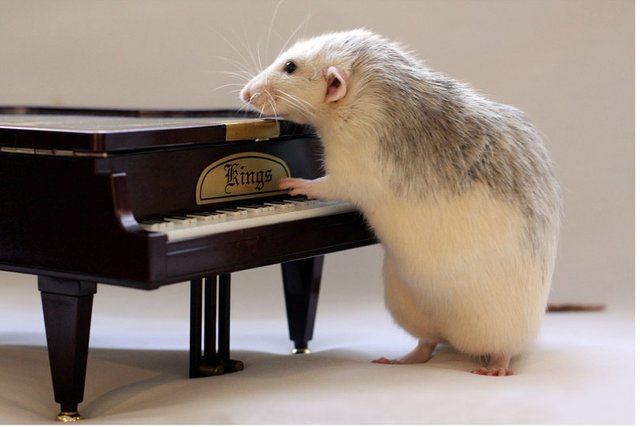
What's a synthesizer?
Well, a synthesizer is an electronic instrument that generates electrical signals from an oscillator and then converts them into sound. This allows them to imitate sounds from pre-existing instruments as well as generate new tones, making it an extremely useful and creative tool.
These are usually executed from a keyboard, but there are multiple presentations and ways to play them either a sequencer, an electronic drum or even just one module.
There are many different types of synthesizers that use different processes (synthesis) to generate sounds, which if necessary I will go on to explain in more detail in some future post because it is such an extensive subject, I would have you reading for hours and is not the idea hahaha.
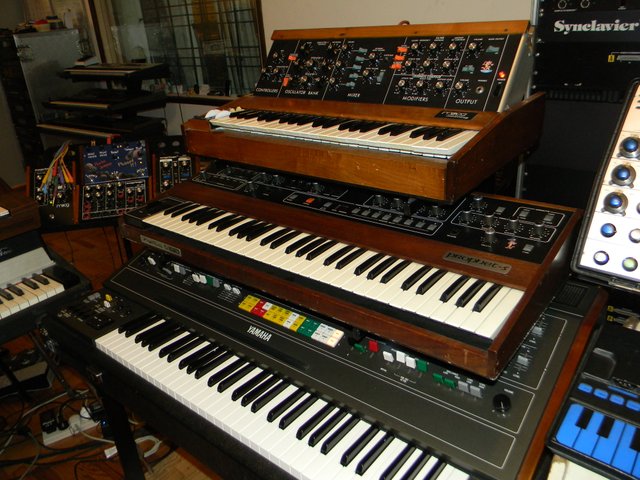
In this case we are going to use only 2 virtual synthesizers belonging to the "Logic pro x", a "DAW" (digital audio workstation) that is used in Mac; in this way, anyone with a computer can access these programs and synthesizers, because let's be realistic... real synthesizers are a little expensive, right? hahaha.
The synthesizers that we are going to use are the ESP, a stereo polyphonic synthesizer module.
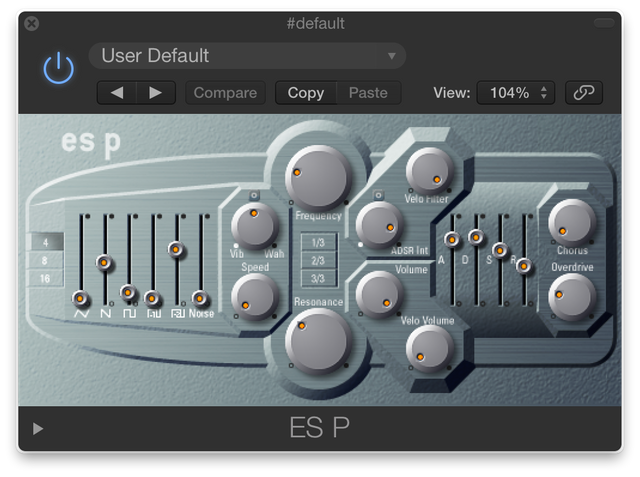
and the ESM, a monophonic module.
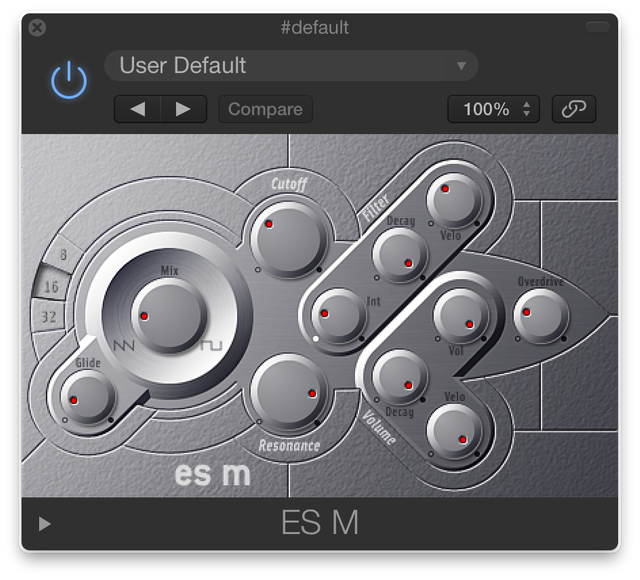
Okay... relax... it's not a flight control panel or a calculator hahaha, they are just the modules of a synthesizer, in other words, the brain; it's a little scary when you see them separately without the keyboard in between.
With these modules, we have the possibility of modifying all the parameters that appear on screen such as the type of wave we want to use or combine, the type of frequency, the note height, the attack, the sustain and many other parameters that will allow us to create sounds that we need for our music, it's just a matter of doing a little research and building our own combinations.
For this reason we must know a little about the acoustic Envelope, this is a way of defining, in terms of four global parameters, the temporal evolution in amplitude of any sound.
The parameters are:
Attack: This is the input time. The time it takes to hear the sound after the instrument has been played.
Decay: The time it takes for the amplitude to be reduced to the sustain amplitude, after having reached the maximum amplitude, without detaching the key or vibratory induction point.
Sustain: After decay, it is the amplitude that remains constant until the key or vibration induction point is detached.
release: The time it takes for the sound to lose its full amplitude after the launch of the key or vibration induction point.
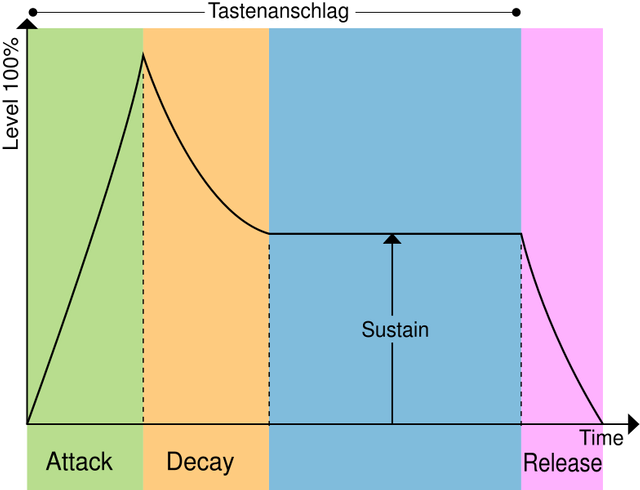
This allows us to have control over the sounds we are creating, for example: if I want a sound similar to a bass drum, I will use a low note, with a very fast attack and a very short decay, hold and release. If I use similar parameters but with high notes it will result in a snare type sound.
On the contrary, if I want a sound similar to a string pad, I will use a slow attack, with a longer decay, hold and release, which will result in a softer sound that lasts longer.
That's why it's important to investigate the characteristics of the sounds we want with respect to the envelope; if you take the work and time, you can get almost any kind of sound just by using these modules.
Here is my song:
As you can see, I chose a more electronic pop style, it works excellent with this type of sounds, or at least in my opinion hahaha.
For this music I created:
-1 snare
-1 bass drum
-1 bass guitar
-1 string pad
-1 lead for the melody
-1 arpeggio lead
-1 hi hat.
It could be the soundtrack of "Wreck-It Ralph" right? hahahahaha.
I use a keyboard type midi controller connected to my computer to play and record this music. The way I record it is instrument by instrument, that is to say, I do it layer by layer; this way I create and test at the same time different ideas that come to my mind.
This allows me to be a little more creative, playing myself everything becomes more musical and in my humble opinion, less "cold".
This type of work can be done in any DAW program ( Reaper, Protools, Cubase, Studio One, Ableton Live and many others) and with any virtual synthesizer module you have. In fact... the ESP and ESM of Logic pro x are pretty ugly modules to work with, but that's exactly why they're more than perfect for exercising creativity and production quality, because you can't always work with the tools you want.
I invite you to try to work under this type of situations, you would be surprised by the quality of the result you can reach.

I hope you liked my post, any doubt you have please ask, with all the love of the world I will try to answer and help you!

Yours truly: @piterman
Hola amigo, muy buen artículo, te sigo ya desde hace un cuanto tiempo y tu contenido tanto en inglés como en español me parece que está muy bien; y de hecho veo que nuestro contenido se parece bastante ya que es del ámbito musical y hacemos análisis musicales, si gustas puedes pasarte por mi blog y verlo, también si algún día estás dispuesto a hacer algún tipo de colaboración juntos tenla por hecho que estaría muy de acuerdo.
hola hermano!, dale me paso por tu blog, que bueno que te guste mi contenido! claro que si podriamos colaborar en un articulo!
Genial bro, si tienes alguna idea o algo que quieras hacer en conjuntome avisas; igual yo, si se me ocurre algo te aviso para trabajar en equipo :D